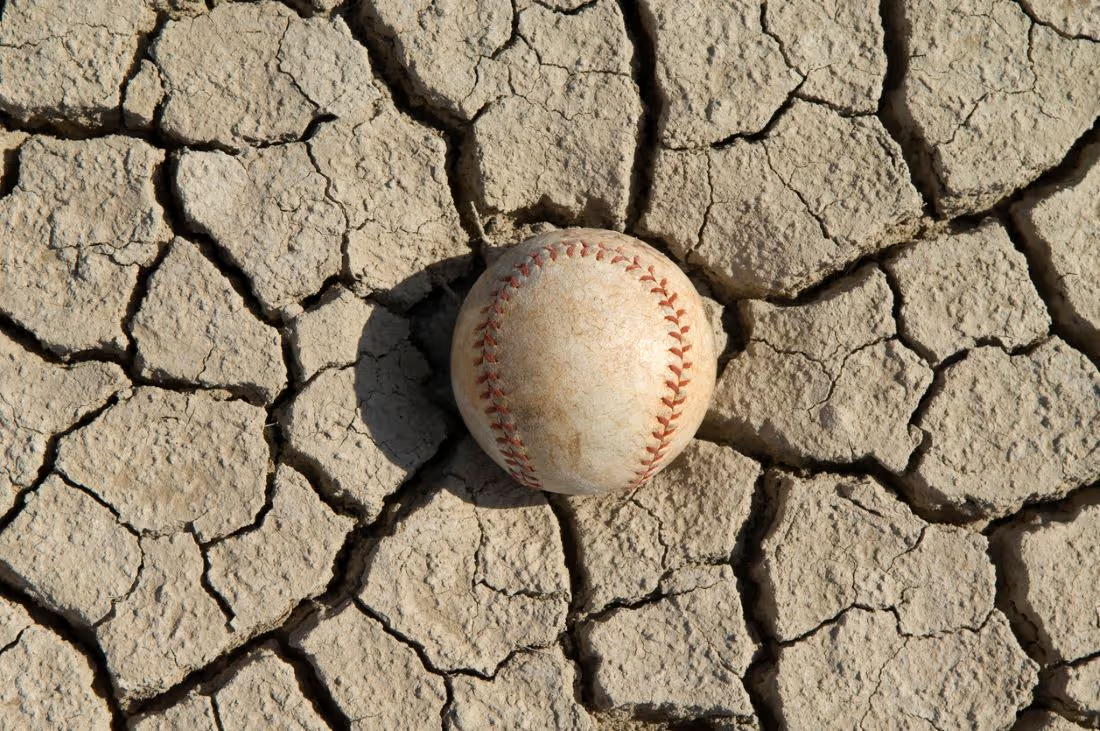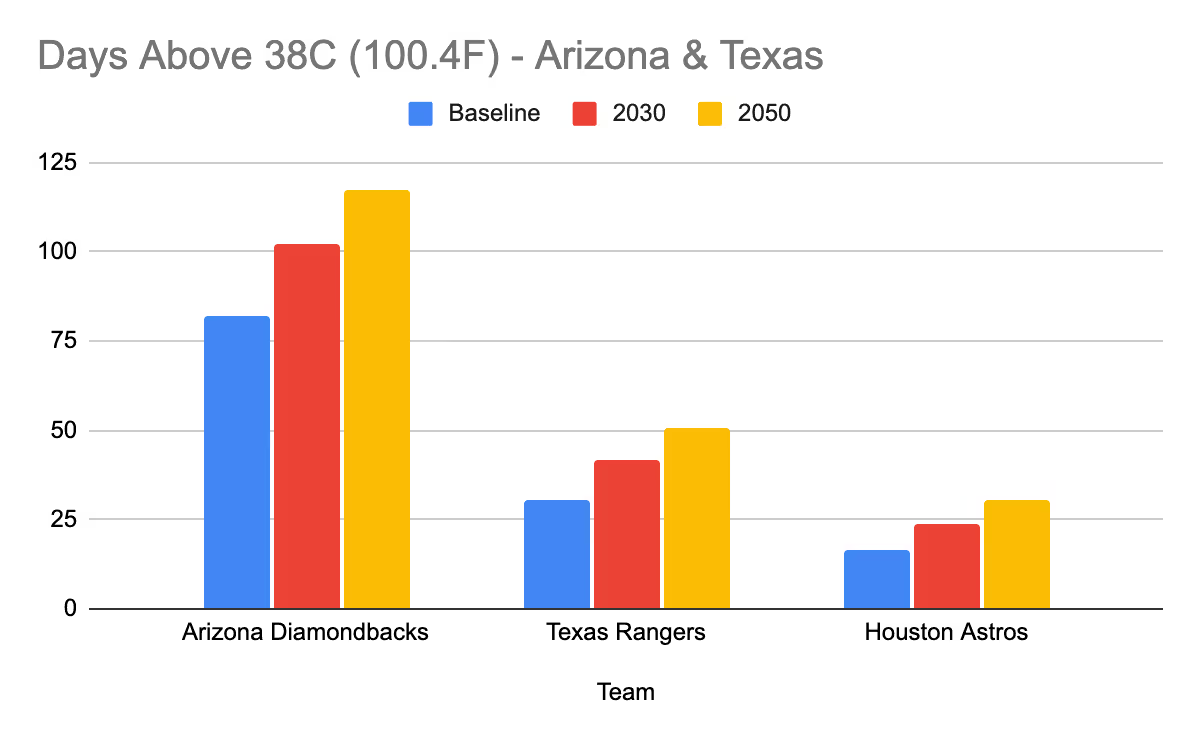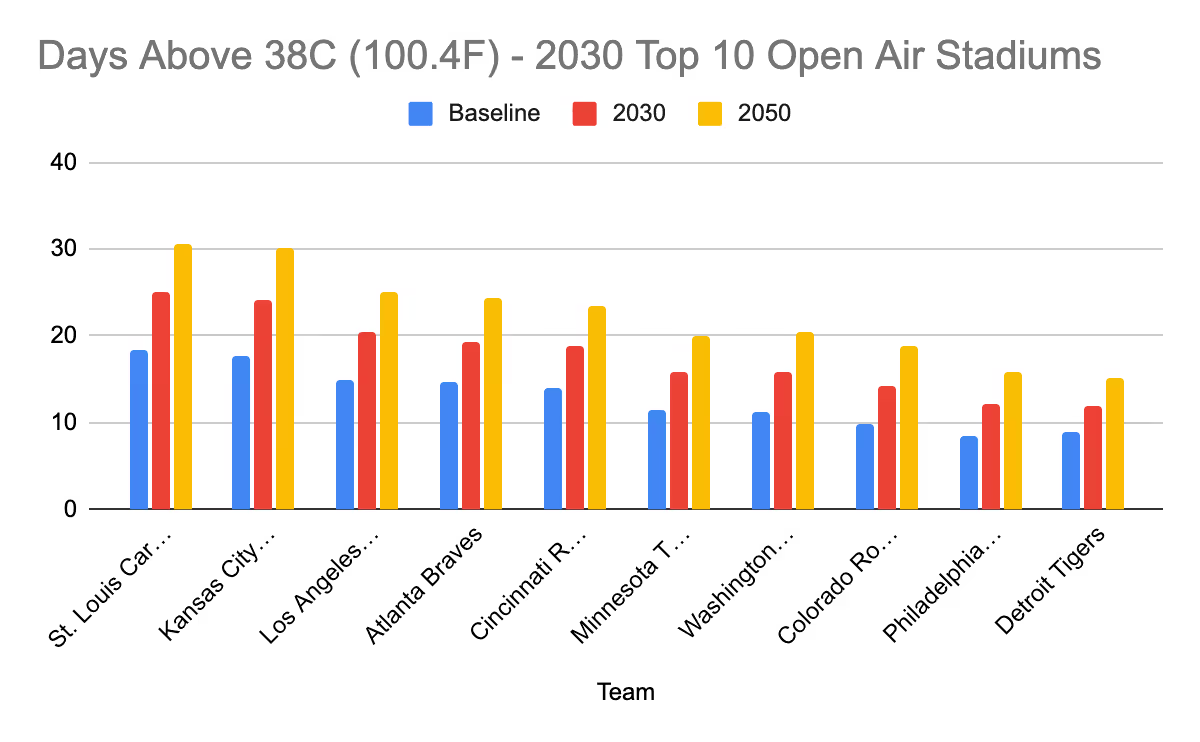
The recent IPCC AR6 report shows that we are on a path toward permanent global warming and as a result, we can expect more extreme weather that will deliver significant blows to the world’s physical assets, infrastructure, and people.
One industry (in addition to many) that Jupiter believes will be impacted is outdoor sports including baseball. Will people stop attending games or will open air stadiums change their game times to cooler times of day? Will concession stands see fewer employees or more of them becoming ill from heat stroke? These economic impacts remain to be seen, but we do know that the record-breaking extreme heat we are experiencing now is a baseline for what is to come.
How will America’s favorite national pastime likely be impacted by climate change?
Jupiter looked at how heat and heat stress may potentially change the way baseball is played or watched over the next 30 years. How will extreme heat, specifically the number of hot days and the number of ‘dangerous’ wet bulb globe temperature (WBGT) days, likely increase over the next 10 to 30 years if we continue down our worst case scenario (SSP585) path for climate change?
Hot Days – Number of Days Over 38 °C (100.4 °F)
There will be more hot days on average as we look out to 2030 and 2050 at nearly all MLB ballparks due to climate change.
For ballparks already in hot locations such as Arizona and Texas, there will be even more hot days. Teams in these locations have already invested in measures such as retractable roofs to keep players and fans out of the direct heat and sun. However, as more games take place under the roof, there is greater financial impact resulting from increasing costs of cooling as well as worker productivity and worker health and safety.

However, open air ballparks across the country will likely see a 30-40% increase in the number of hot days between now and 2030 and a more than 65% increase looking out to 2050. The 10 teams most impacted by an increase in hot days at their current, open air home ballparks will be:
- St. Louis Cardinals
- Kansas City Royals
- Los Angeles Dodgers
- Atlanta Braves
- Cincinnati Reds
- Minnesota Twins
- Washington Nationals
- Colorado Rockies
- Philadelphia Phillies
- Detroit Tigers

Dangerous Days – Number of Days Above Dangerous WetBulb Globe Temp
WetBulb Globe Temperature (WBGT) is a measure of heat stress in direct sunlight, which takes into account temperature, humidity, wind speed, sun angle, and cloud cover (solar radiation). In other words, it measures how our bodies experience heat, not just measuring the heat itself.
A sustained WBGT exceeding 35 °C (95 °F) is deemed dangerous and is likely to be fatal even to fit and healthy people, who aren’t hindered by clothing and are in the shade, next to a fan. It’s at this temperature when human bodies switch from shedding heat to the environment, to gaining heat from it.
FYI - below are OSHA’s specifications for what is considered dangerous:

For the location of the majority of baseball’s outdoor venues, it’s likely the number of these dangerous days will double by 2030 and triple by 2050 and likely impact a number of home games.


So what could the future of baseball look like over the next 20-30 years?
We will likely see a shift to more evening games at cooler times of the year across open air stadiums or potentially more games played at stadiums that have roofs. The economic impacts for MLB teams is increased costs to cool retractable roof stadiums or additional costs to provide more shade and relief from sun and high temperatures. But will fans ditch the stadium altogether and watch from the comfort of their air conditioned homes?
But don’t forget about the best part of baseball, grabbing a hot dog, beer or some fries. During extreme heat and high WBG temperatures, security staff and concession stand workers will require additional breaks to remain healthy. We are currently seeing a trend of delivery truck drivers on the verge of striking due to poor working conditions with current temps at an all time high. In fact, heat-related illnesses send roughly 67,500 people in the U.S. to the emergency room every year and kill roughly 700, according to the CDC.
So what can the MLB do today to lessen the impact on players and fans?
Well, we live in a world designed for a climate that no longer exists, so understanding what the future holds is step 1. From there, stadiums can take steps to adapt and build resilience to what will be higher temperatures into the future.
Jupiter provides physical climate risk analytics that help organizations understand their risk so they can take action to build resilience. Let us unearth the risks you never thought you’d face in the future today. info@jupiterintel.com
.webp)
